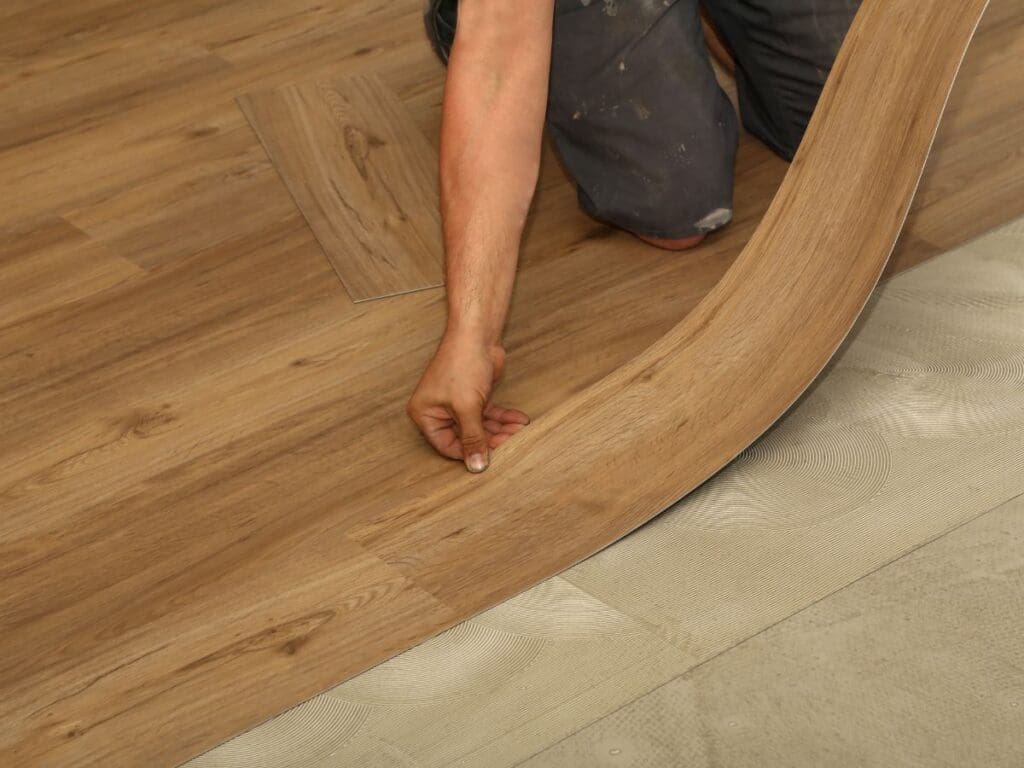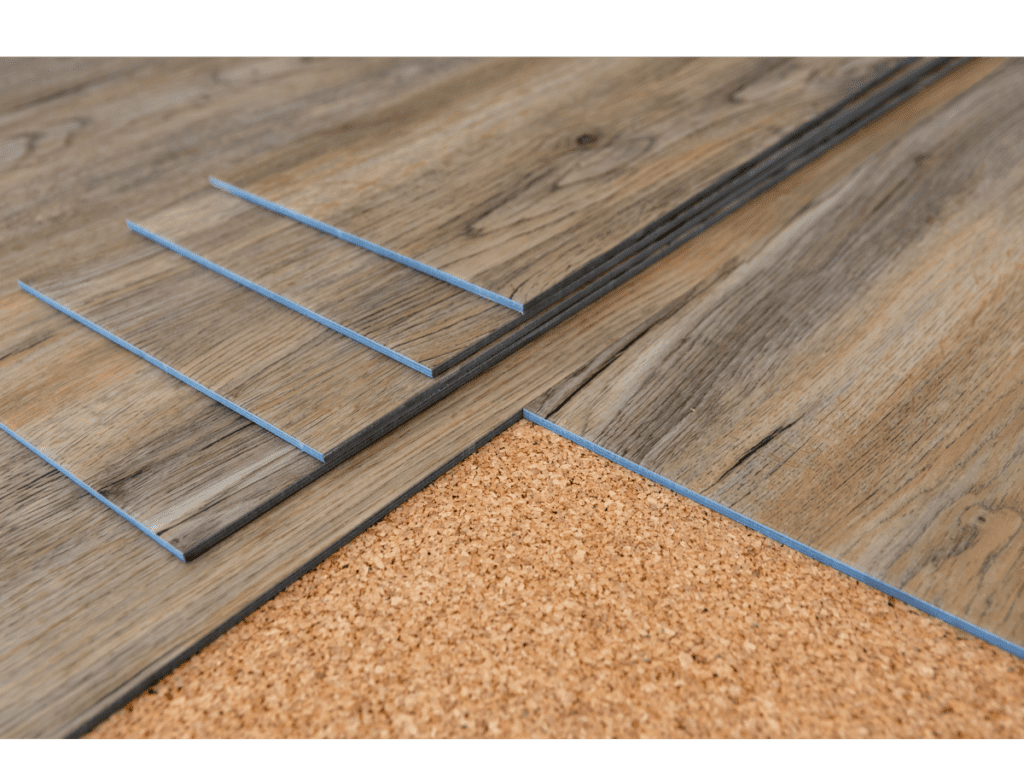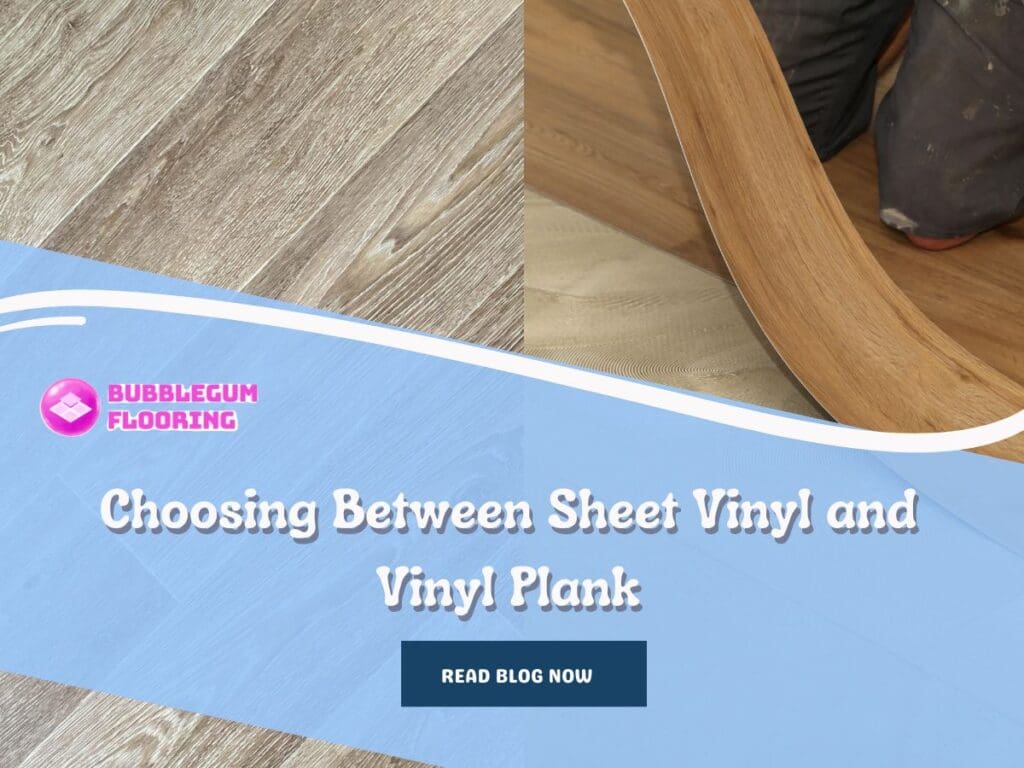Choosing the right flooring can significantly impact the aesthetics and functionality of your space. When considering vinyl options, two popular choices emerge: sheet vinyl and vinyl plank flooring. Each offers unique benefits tailored to different needs and preferences. Sheet vinyl, known for its seamless installation and budget-friendly nature, is ideal for large areas and moisture-prone spaces like kitchens and bathrooms.
Vinyl plank flooring mimics the look of hardwood with its individual planks, providing durability and a wide variety of designs. Understanding the strengths and weaknesses of each can help you make an informed decision that enhances your home’s style and comfort.
What is Sheet Vinyl?
Sheet vinyl is a single, continuous roll of flooring that provides a seamless look. Its water-resistant properties make it an excellent choice for bathrooms, kitchens, and other high-moisture areas.
This type of flooring is budget-friendly, easy to install, and simple to maintain, making it ideal for cost-conscious homeowners. Routine cleaning helps extend its lifespan, making it a reliable option for busy households.

What is Vinyl Plank?
Vinyl plank flooring replicates the appearance of hardwood while offering enhanced durability and water resistance. Installed as individual planks, it’s a favorite for living rooms, bedrooms, and high-traffic areas.
Its ability to handle heavy use, including tasks like wood shingle roof maintenance, makes it a practical yet stylish choice. For a cohesive design, vinyl plank flooring pairs beautifully with wood shingle siding maintenance, offering long-lasting charm and functionality.

Key Differences Between Sheet Vinyl and Vinyl Plank
When it comes to choosing vinyl flooring, two popular options are sheet vinyl and vinyl plank. Both offer durability, water resistance, and affordability, but they differ significantly in appearance, installation, and overall performance.
| Room Type | Best Choice | Why? |
|---|---|---|
| Bathroom | Sheet Vinyl | Seamless design prevents water damage. |
| Kitchen | Either | Both offer water resistance and durability. |
| Living Room | Vinyl Plank | Looks more like real wood and adds warmth. |
| Bedroom | Vinyl Plank | Provides comfort and a cozy aesthetic. |
| Basement | Sheet Vinyl | Handles moisture better in humid conditions. |
| Laundry Room | Sheet Vinyl | Offers seamless protection against spills. |
Here’s a detailed comparison to help you make the right choice:
1. Appearance and Aesthetic Appeal
When it comes to appearance and aesthetic appeal, sheet vinyl is available in large, continuous sheets that often mimic the look of tile, stone, or wood. However, the printed designs can sometimes appear less realistic, especially if seams are visible in larger spaces.
On the other hand, vinyl plank is specifically designed to replicate the look and texture of hardwood floors. The individual planks not only create a more authentic appearance but can also include features like embossing, which enhances the realism by adding depth and texture to the surface.
2. Installation
Sheet vinyl typically requires professional installation due to its large size, precise cutting needs, and glue-down method, making it more challenging for DIY projects. In contrast, vinyl plank is DIY-friendly with click-and-lock or peel-and-stick options, allowing for easy, piece-by-piece installation. Its modular design also enables greater flexibility and easier replacement of damaged sections.
3. Durability and Longevity
Sheet vinyl’s seamless design offers excellent water resistance, making it ideal for moisture-prone areas like bathrooms or laundry rooms. However, if it gets damaged, repairing a single section is difficult and may require replacing the entire sheet. Vinyl plank is also highly water-resistant, but its individual planks can be easily replaced when damaged, enhancing its durability and simplifying maintenance.
4. Comfort and Thickness
Sheet vinyl is typically thinner and softer underfoot, though it often requires an additional underlayment to improve comfort. In comparison, vinyl plank is thicker and more rigid, offering better comfort and noise reduction. Many vinyl plank options also come with an attached underlayment for enhanced cushioning and support.
5. Cost
Sheet vinyl is generally more affordable upfront, making it a cost-effective option for covering large areas on a budget. However, vinyl plank costs more per square foot, but its greater durability, ease of repair, and longer lifespan make it a better value in the long run.
6. Customization and Versatility
Sheet vinyl offers limited customization due to its large sheet format, making it challenging to fit unique layouts or patterns, especially in irregular spaces. In contrast, vinyl plank’s modular design provides much more flexibility, allowing for creative customization. You can easily create various patterns, such as herringbone or staggered layouts, giving you more options to personalize your space.
7. Repair and Replacement
With sheet vinyl, a damaged area typically requires replacing the entire sheet, which can be costly and time-consuming. In contrast, vinyl plank allows for easy replacement of individual planks without disturbing the rest of the floor, making repairs more convenient and affordable.
Pros of Sheet Vinyl Flooring:
- Water Resistance: Its seamless design makes sheet vinyl highly water-resistant, ideal for wet areas like bathrooms, kitchens, and laundry rooms.
- Affordable: It is typically more affordable upfront compared to other flooring options, making it a budget-friendly choice for large areas.
- Easy to Clean: The smooth surface of sheet vinyl makes it easy to clean and maintain, requiring just regular sweeping and occasional mopping.
- Variety of Designs: Sheet vinyl comes in various patterns and designs, including styles that mimic wood, tile, or stone, offering versatility in aesthetics.
Cons of Sheet Vinyl Flooring:
- Difficult to Repair: If damaged, a single area often requires replacing the entire sheet, which can be costly and time-consuming.
- Limited Customization: Due to its large sheet format, customization options are more limited, and cutting it for complex layouts or patterns can be challenging.
- Less Realistic Look: The printed patterns can sometimes appear less realistic than other flooring options, especially with visible seams.
- Installation Complexity: Professional installation is often required for precise cutting and gluing, making it less suitable for DIY projects.
Pros of Vinyl Plank Flooring:
- Realistic Aesthetics: Vinyl planks closely mimic the appearance of hardwood, stone, or tile, with features like embossing that add texture and realism.
- Water Resistance: Like sheet vinyl, vinyl plank is highly water-resistant, making it a great option for bathrooms, kitchens, and basements.
- DIY-Friendly: The click-and-lock or peel-and-stick installation systems make vinyl plank easy to install, even for beginners.
- Durability: Vinyl plank is highly durable, resistant to scratches, dents, and fading, and its individual planks can be easily replaced if damaged.
- Comfort: It is thicker and more rigid than sheet vinyl, providing better underfoot comfort and noise reduction. Some options include built-in underlayment for added cushioning.
Cons of Vinyl Plank Flooring:
- Higher Upfront Cost: Vinyl plank typically costs more per square foot than sheet vinyl, making it a more expensive option initially.
- Visible Seams: Although individual planks offer a natural look, seams between planks can be visible, which may not be ideal for some preferences.
- Limited to Certain Styles: While it offers a realistic wood or stone look, vinyl plank may not be suitable for those seeking highly unique or intricate patterns.
- Not Completely Seamless: Although more water-resistant than many other flooring options, seams between planks may still allow for some moisture penetration if not properly sealed.
How to Disinfect Vinyl Floors Properly
Whether you choose sheet vinyl or vinyl plank flooring, both options offer durability and aesthetic appeal for your home. As you enjoy your beautiful new floors, it’s essential to maintain them properly.
In our next blog post, we’ll delve into the best practices for disinfecting vinyl floors, ensuring they remain not only visually appealing but also hygienic. From the right cleaning solutions to effective techniques, we’ll provide you with all the tips you need to keep your floors in pristine condition.


